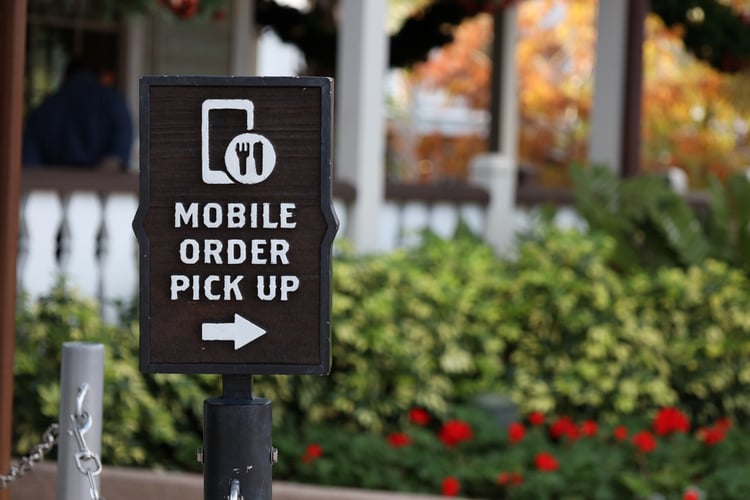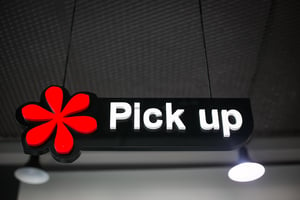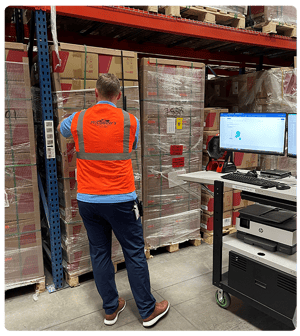
US shoppers spent approximately $95.9 billion on click-and-collect purchases in 2022--and this trend is only expected to grow. By 2027, this figure is expected to grow to $703.2 billion. Almost two-thirds of US retail stores are offering “BOPIS” options--discover why customers are taking to this trend so strongly and learn what tools you need to make it work.
What is the BOPIS Trend?
Buy Online, Pick Up in Store is a retail strategy that allows consumers to order the products they want online and then pick them up at a local store. This is an omnichannel strategy for sellers that offers convenience to buyers and other benefits for retailers. Here’s how it works:
1. Customer Shops Online
The customer browses the seller’s website or app to find items they wish to purchase.
2. Seller Confirms Inventory in Real-Time
 The seller confirms the local inventory of items in real-time using a combination of RFID tags, barcodes, and advanced inventory management systems.
The seller confirms the local inventory of items in real-time using a combination of RFID tags, barcodes, and advanced inventory management systems.
3. The Purchase Gets Finalized
The customer pays for the item they choose online and selects the store they want to use for pick-up. They will receive a confirmation email or SMS with pickup instructions.
4. Seller Fulfills the Order Locally
The retailer prepares the item for pickup by pulling it out of the warehouse or off the store shelf. It’s usually moved to a staging area at the front of the store.
5. Customer Travels to the Store for Pick-Up
The customer visits the store during business hours at their convenience to pick up the order. Many retailers will bring the order out to the customer’s vehicle.
How BOPIS Can Help Your Business
The rising popularity of BOPIS among customers and retailers isn’t surprising because it’s a win-win situation. Shopify reports that 59% of consumers want to use some form of BOPIS options. Here are some of the benefits of BOPIS for consumers:
 Convenience — Customers can get online to shop for the items they want at any time of the day and can avoid the hassle of going into the store to browse through shelves.
Convenience — Customers can get online to shop for the items they want at any time of the day and can avoid the hassle of going into the store to browse through shelves. - Instant Availability — Customers can instantly view what items are available for local pickup. If one store doesn’t have an item, the customer can choose another location that does.
- Flexibility — Once an order has been placed, the customer can decide when they want to drive to the store to pick it up. Most retailers provide a time frame for pickup, such as a certain number of days after order confirmation.
- No Shipping Costs — Customers who use BOPIS won’t have to pay for delivery or shipping fees because they travel to the store to collect the item.
- Contactless Experience — Consumers who want to avoid physical contact with others can choose BOPIS as a safe shopping option.
The above lists the incentives for customers to use BOPIS, but why would your business want to pursue this strategy? Here are several reasons:
- Increased Sales— Any time you can make a sale, your business benefits. BOPIS provides one more strategy for connecting with customers and fulfilling orders, which can help you reach a new audience segment.
- Lower Shipping Expenses — Shipping is costly for retailers, particularly last-mile deliveries that bring products to a customer’s doorstep. BOPIS allows your business to bypass these costs, which is money that goes directly to your bottom-line results.
- Integrated Inventory Management — When you fulfill orders for popular items directly from your retail locations, this gives you more insight into customer wants and needs. It also gives your business an incentive to leverage an integrated inventory management system.
Things to Consider If You Want to Use BOPIS
If you are considering implementing a BOPIS strategy, there are several large retailers you can emulate. For example, Nordstrom launched its “Nordstrom Local” program in 2017, where customers can shop for items online and pick them up at their local store. Other major retailers offering this strategy include Best Buy, Lowes, Target, and Lululemon.
Once you understand how the BOPIS process works and its many benefits, you may be anxious to try it. Here are some of the top things to consider if you want to use BOPIS for your business.
1. You Need a Physical Store
Of course, the only a BOPIS strategy can work is if you have both an online presence and a physical store. Preferably, you will have several brick-and-mortar locations so customers can choose the most convenient place to pick up their purchases.
2. Storage Space is a Must
If you want your BOPIS program to be a success, you’ll need to offer as many products for in-store pickup as possible. This means you will either need to pull the items from your shelves, store them in your on-site warehouse, or figure out a working combination of the two.
3. Your Inventory Must Be Synchronized
When a customer shops for your products online, it’s critical that you are showing them real-time inventory figures that are 100% accurate. If you say you have an item and you really don’t, the customer could make a wasted trip to your store, which won’t make them happy. Also, showing out-of-stock items that you actually have on hand can lead to lost sales. Using RFID tags combined with a robust inventory management system can help you avoid these issues and provide the visibility you need for BOPIS.
4. Think About Your Fulfillment Strategy
 Your order fulfillment process is another essential factor for a successful BOPIS strategy. After all, customers won’t find it convenient if they arrive at your store and no one has “pulled” the product for them to pick up as promised.
Your order fulfillment process is another essential factor for a successful BOPIS strategy. After all, customers won’t find it convenient if they arrive at your store and no one has “pulled” the product for them to pick up as promised.
Whether you are getting items from the floor or warehouse, you can drive efficiency in your in-store order fulfillment process by using powered retail carts. These mobile-powered carts can be located throughout the store, giving workers the information and tools they need to fulfill online orders quickly and efficiently.
Most retailers will discover that BOPIS is another strategy that allows them to remain competitive by giving customers what they want. It’s flexible, convenient, and cost-effective when implemented correctly. Despite a few challenges surrounding inventory management, the benefits of implementing BOPIS outweigh the costs. With solutions like RFID tags and mobile retail carts to process orders and manage inventory, this strategy can future-proof your business.












